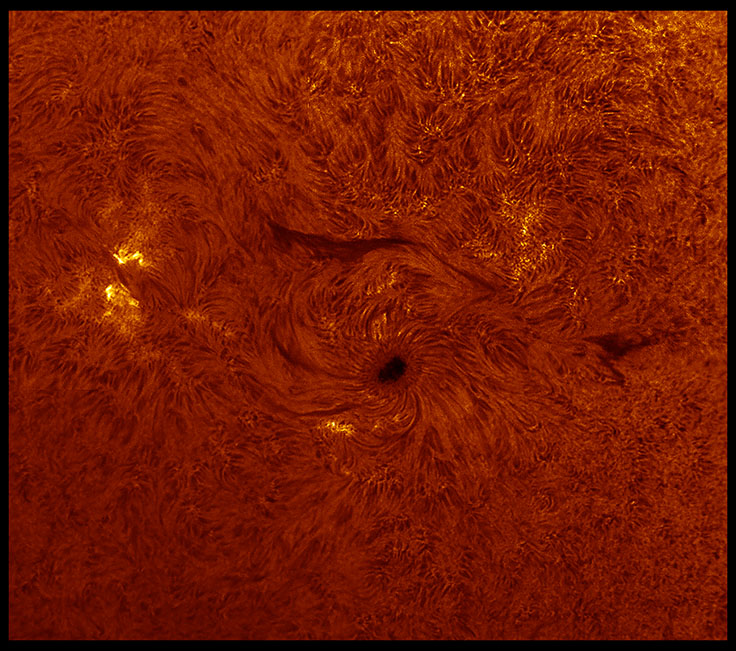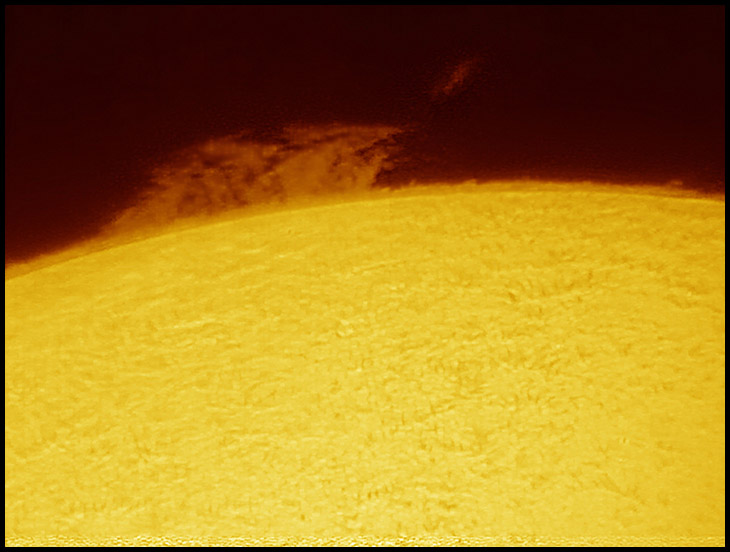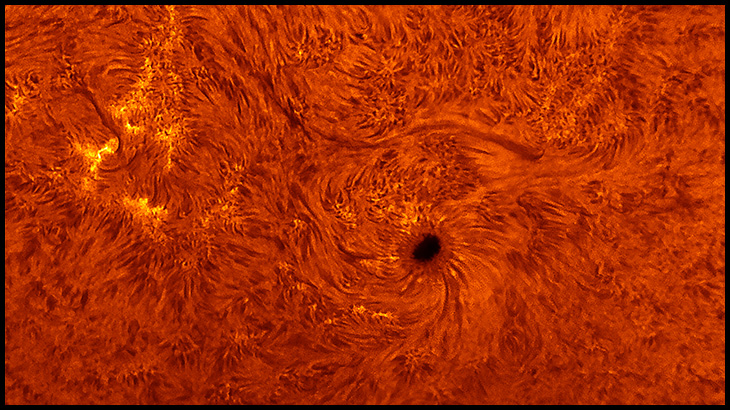See Spot. See Spot turn
6/16/2016. On the meridian. The big spot is just about halfway across the face of the Sun on its second transit. The bright, disturbed area following the spot erupted in a pair of flares that almost reached "C" levels.

Four panels, best 50 of 500 frames each.
Yes, you can click it.

Pretty much the same tech specs as before,
except a single clip with gamma adjusted in FireCapture
to show low-surface-brightness features.
6/18/2016. Not because anything particularly spectacular was happening, but just because I could:

Best about 10% of two, 500-frame clips.
Actually one side uses almost twice as many frames as the other. In AutoStakkert, I picked the frames from each clip that ended up significantly on the "good" side of par when sorted by estimated quality. For these two clips, that was about 58 frames on one side and 102 on the other.